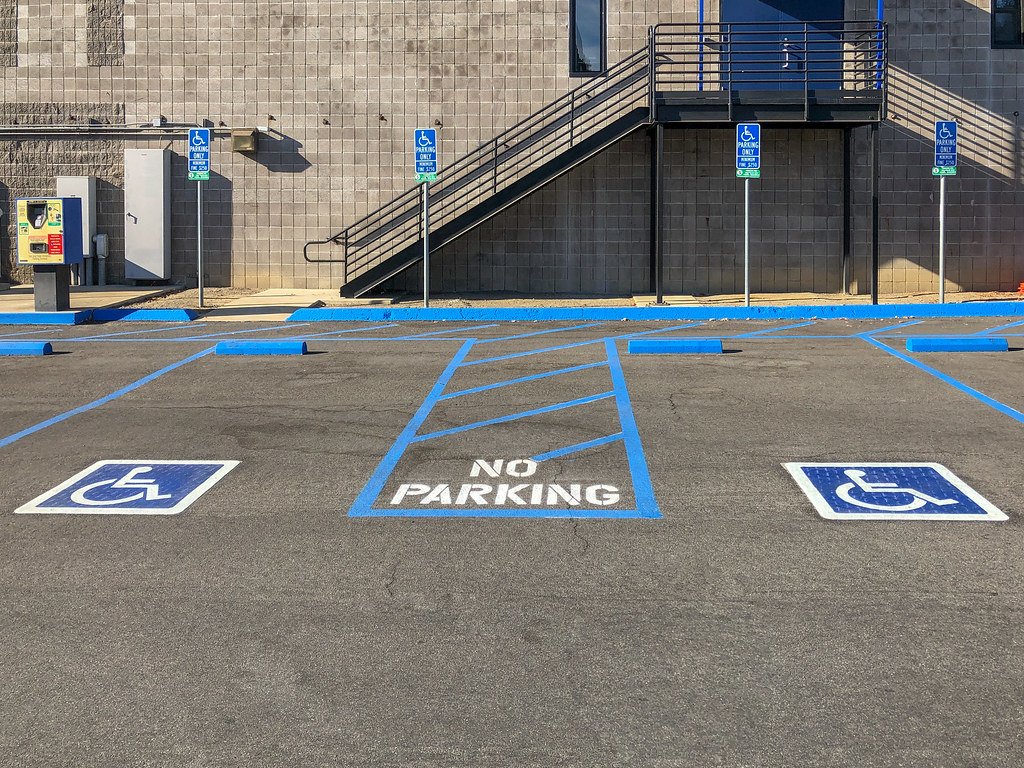Handicap parking plays a crucial role in ensuring accessibility for individuals with disabilities. These designated spaces are more than just a convenience; they are essential for facilitating independence and mobility. Handicap parking helps those with physical challenges access buildings and services more easily. This article explores the importance of handicap parking, providing a comprehensive overview of its purpose, regulations, and application process. Understanding these aspects ensures that everyone can make the most of the resources available and adhere to the rules designed to support those in need.
What is Handicap Parking?
Definition and Purpose
Handicap parking refers to designated parking spaces reserved for individuals with disabilities. These spaces are strategically located closer to building entrances, providing easier access for those who have mobility challenges. The primary purpose of handicap parking is to ensure that people with disabilities can park as close to their destination as possible, reducing the physical strain of walking long distances. These spaces are typically wider than regular parking spots to accommodate wheelchair users and to allow for easier entry and exit from vehicles.
Historical Context and Evolution
The concept of handicap parking has evolved significantly over the years. Initially, parking spaces for people with disabilities were rare and often misunderstood. As awareness grew, regulations were introduced to mandate these spaces in public and private facilities. The Americans with Disabilities Act (ADA), enacted in 1990, played a pivotal role in standardizing these regulations across the United States, ensuring consistency and improving accessibility. Today, handicap parking is a well-established practice, with clear guidelines and requirements to support individuals with disabilities effectively.
Who Qualifies for Handicap Parking?
Criteria for Eligibility
To qualify for a handicap parking permit, individuals must meet specific criteria that demonstrate a significant mobility impairment. These criteria typically include having a physical disability that substantially limits one or more major life activities, such as walking, climbing stairs, or standing. Common qualifying conditions include severe arthritis, spinal cord injuries, or other disabilities that require the use of mobility aids like wheelchairs or walkers. Each jurisdiction may have its own set of guidelines, so it’s important to check local regulations for detailed eligibility requirements.
Types of Disabilities Covered
Handicap parking permits are designed to accommodate various types of disabilities. This includes individuals with physical impairments that affect their ability to walk long distances, as well as those who may use assistive devices like canes or prosthetics. The permits are also available to individuals with temporary disabilities, such as those recovering from surgery or injury, if their mobility is significantly impaired. It’s essential for the permit application process to accurately reflect the nature of the disability to ensure that those who genuinely need the parking spaces are the ones who benefit from them.
Handicap Parking Symbols and Signs
Description of Common Symbols and Signs
Handicap parking spaces are marked with specific symbols and signs to ensure they are easily recognizable. The most common symbol is the blue wheelchair icon, which indicates that the space is reserved for people with disabilities. This symbol is often accompanied by signs that specify the rules for using the space, such as the requirement to display a valid Handicap parking permit. Additionally, these spaces are usually painted with a blue stripe and are often located near building entrances to maximize accessibility.
How to Recognize and Interpret Them
Recognizing and interpreting handicap parking signs and symbols is essential for ensuring compliance with parking regulations. The blue wheelchair symbol is universally understood, but additional signage may provide more details, such as time limits or specific rules. For instance, some signs might indicate that the space is only available during certain hours or that a permit must be displayed. It’s important to pay attention to these details to avoid fines or penalties and to respect the designated spaces for those who need them.
How to Apply for a Handicap Parking Permit
Step-by-Step Application Process
Applying for a handicap parking permit involves a straightforward process, but it varies slightly depending on the location. Generally, the process includes obtaining an application form from a local Department of Motor Vehicles (DMV) office or their website. The form must be completed with personal information and details about the disability. In many cases, a healthcare provider’s certification is required to verify the disability and the need for a permit. Once the application is submitted, it is reviewed by the relevant authorities, and a permit is issued if the criteria are met.
Required Documentation and Forms
When applying for a handicap parking permit, specific documentation is required to support the application. This typically includes a completed application form, proof of identity, and medical certification from a healthcare provider. The medical certification should detail the nature of the disability and how it affects mobility. Additional documents, such as proof of residency or vehicle registration, may also be required. Ensuring that all required documents are accurately completed and submitted can expedite the approval process and avoid delays.
Rules and Regulations for Using Handicap Parking Spaces
General Rules for Parking
Handicap parking spaces come with a set of rules designed to ensure they are used correctly. The primary rule is that only individuals with a valid handicap parking permit are allowed to use these spaces. Permits must be clearly displayed in the vehicle to avoid fines. Additionally, these spaces should not be occupied by vehicles without permits, even if they are temporarily vacant. Some areas may have additional rules, such as time restrictions or specific requirements for the type of vehicle that can use the space.
Common Violations and Penalties
Violating handicap parking rules can result in significant penalties. Common violations include parking in a designated space without a permit, using a permit that is not assigned to the vehicle, or blocking access to handicap parking areas. Penalties for these violations typically include fines and, in some cases, the towing of the vehicle. Repeated offenses can lead to more severe consequences, such as increased fines or legal action. It’s crucial to understand and follow the regulations to avoid these penalties and ensure fair access for all individuals with disabilities.
Benefits of Handicap Parking Spaces
Accessibility Improvements
Handicap parking spaces significantly improve accessibility for individuals with disabilities. By providing closer parking spots near entrances, these spaces reduce the physical effort required to reach buildings and services. This is particularly important in large or crowded areas where walking long distances can be challenging. Improved accessibility leads to greater independence and a better quality of life for those with mobility impairments. The availability of these spaces in various locations, including shopping centers, offices, and public facilities, helps ensure that individuals with disabilities can participate more fully in daily activities.
Impact on Daily Life and Independence
Having access to handicap parking spaces enhances the daily lives of individuals with disabilities by reducing the barriers they face. This access allows for easier travel, more convenient access to necessary services, and greater participation in social and community activities. It also supports the independence of those with mobility challenges, allowing them to manage their activities without relying heavily on others. The presence of well-marked and adequately maintained handicap parking spaces is an essential aspect of fostering an inclusive and accessible environment for everyone.
Challenges and Issues with Handicap Parking
Common Problems Faced by Permit Holders
Despite the benefits of handicap parking, there are several challenges that permit holders may encounter. One common issue is the misuse of designated parking spaces by individuals who do not have valid permits. This can result in a lack of available parking for those who genuinely need it. Additionally, some permit holders may face difficulties finding accessible parking in crowded or poorly designed areas. The inconsistency in enforcement and the lack of awareness about handicap parking regulations can also contribute to these problems.
Solutions and Recommendations
To address these challenges, several solutions and recommendations can be considered. Increasing public awareness about the importance of handicap parking and the consequences of misuse can help reduce violations. Improved enforcement measures, such as regular patrols and clear signage, can also ensure that regulations are followed. Designing parking facilities with adequate and well-marked spaces, as well as considering the needs of permit holders in urban planning, can further enhance accessibility. Implementing these solutions can help create a more equitable and supportive environment for individuals with disabilities.
How to Report Misuse of Handicap Parking
Procedures for Reporting Violations
Reporting misuse of handicap parking spaces is crucial for maintaining the integrity of the system. Most jurisdictions provide specific procedures for reporting violations. This often involves contacting local authorities or municipal parking enforcement agencies. Some areas may have dedicated phone lines or online forms for reporting misuse. When reporting, it’s important to provide details such as the location of the violation, a description of the vehicle, and the nature of the infraction. Accurate and timely reporting helps ensure that appropriate action is taken.
Contact Information for Relevant Authorities
To effectively report handicap parking violations, knowing the contact information for the relevant authorities is essential. This typically includes local parking enforcement offices, municipal transportation departments, or law enforcement agencies responsible for traffic and parking regulations. Many cities and towns have specific departments or hotlines for handling parking issues. Information on how to contact these authorities can usually be found on municipal websites or through local government offices. Ensuring that reports are directed to the appropriate channels helps facilitate prompt and effective resolution of issues.
Conclusion
Handicap parking is a vital aspect of accessibility for individuals with disabilities, providing essential support and improving quality of life. By understanding the definitions, eligibility criteria, and regulations associated with handicap parking, individuals can better navigate the system and ensure fair use of designated spaces. Addressing common challenges and reporting misuse helps maintain the effectiveness of handicap parking provisions, fostering a more inclusive and accessible environment. Respecting and adhering to handicap parking rules is crucial for supporting the independence and mobility of those who rely on these important resources.



